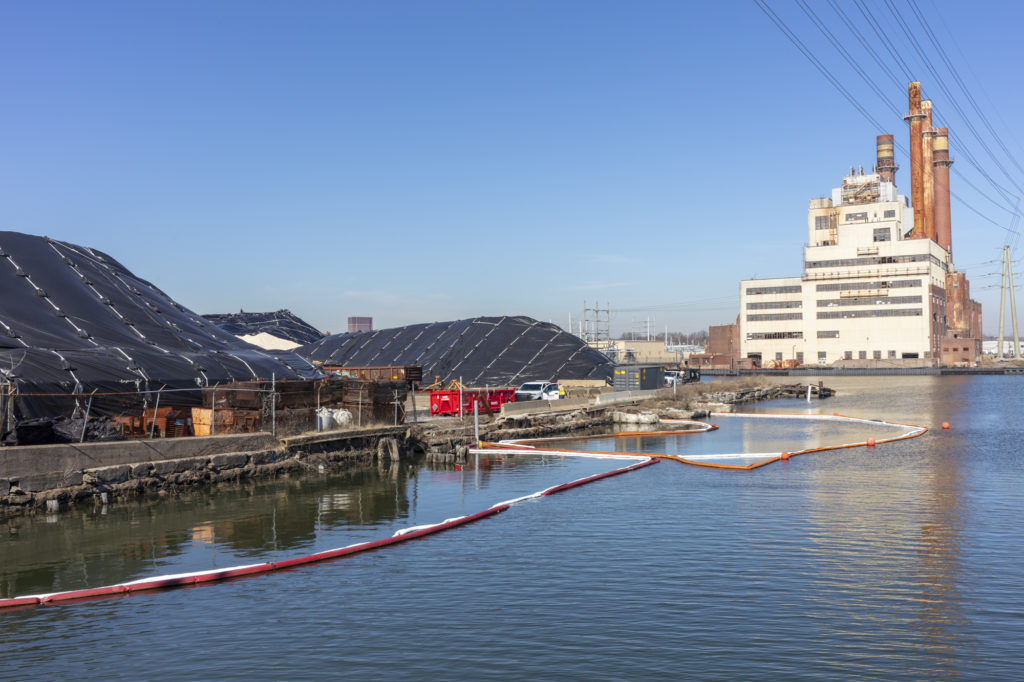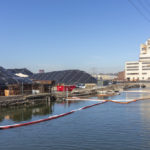Environmental Advisory Council meets with CT DEEP representatives to discuss English Station
New Haven’s Environmental Advisory Council meets with DEEP to discuss plans for cleaning up the decades-old English Station Power Plant.

Yale Daily News
The clean up of the decades-old English Station Power Plant remains a primary concern for New Haven’s Environmental Advisory Council.
On Wednesday, the Environmental Advisory Council met with representatives from Connecticut’s Department of Energy and Environmental Protection to discuss updates on the fate of the English Station Power Plant, located at 510 Grand Ave. in New Haven. The former coal and oil plant, which operated from 1929 to 1992, is currently owned by GMP Property Solutions LLC, which currently plans to put the site back into use. But before that can happen, the site needs to be fully investigated for harmful toxins and decontaminated — a process that some believe has been moving too slowly.
“I think we all share the same interest which is getting the site remediated and back to perfective reuse,” Betsey Wingfield, deputy commissioner of CT DEEP, said at the meeting.
In 2012, the former owners of the building, United Illuminating, entered a partial consent order with CT DEEP where UI agreed to clean up the site. One of the main environmental and public health concerns with the site is the existence of polychlorinated biphenyls, or PCBs, which are probable human carcinogens. The PCBs used in transformers and other electrical equipment during years of the power plant’s operation do not break down easily and can remain in the water, air and soil for long periods of time.
Gary Trombly, who works for CT DEEP, explained at the meeting that there was originally a three-year schedule for the clean up in the partial consent order. However, he said that investigations of the site’s environmental concerns have taken longer than the original schedule due to the complexity of those investigations.
Trombly said the floor of the site has different chemicals throughout the building, so UI has to evaluate concrete, trenches and discharge puddles. He said CT DEEP would also need to investigate the 8 feet of soil beneath the main floor for contaminated materials. If the building is to stay up — which the property owners have not yet decided — the building material would have to be fully investigated and decontaminated as well.
“So there’s a variety of different works going on in different portions of the building upon different floors within the building,” Trombly said.
Under the partial consent order, United Illuminating is required to clean up the site to meet industrial-commercial standards. Wingfield explained that, separate from these standards, the soil of the building is also required to be cleaned up so that PCB concentrations do not exceed more than 1 part per million.
EAC chairwoman Laura Cahn also asked Wingfield about the public health concerns for the community due to the site. She said that EAC members were mainly concerned with the lack of cleanup because of ongoing concerns from nearby residents about their health.
“We are concerned about people living in the vicinity, going to school in the vicinity across the street from this,” Cahn said. “I’m just worried about the existential stress on the people who are facing a toxic space in their neighborhood and the ramifications of that on their health.”
Wingfield responded that the best way to mitigate those concerns permanently was to clean up the site, which is what she said their department is focused on.
“It is also why the time frame does concern us, as it clearly concerns you,” Wingfield said.
EAC members also asked Wingfield what penalties existed for UI for the long clean up time frame. Wingfield said that there were no formal penalties put into place, as it was not typical to include penalties in partial consent orders. However, Wingfield said that because the remediation costs continue to build up, it was not in “UI’s interest to let this drag on forever.”
According to the partial consent order, UI is required to spend at least $30 million on the building clean up. Wingfield said that now, all indications point to the total costs exceeding $30 million.
Aaron Goode, who attended Wednesday’s meeting, said that UI’s March report stated that it had already spent over $15.2 million on the remediation process. Trombly emphasized that the $30 million was a floor, but not a cap.
Wingfield said the DEEP had also been working with the U.S. Environmental Protection Agency, particularly with the PCB coordinator for Region 1, Kim Tisa. Trombly added that Tisa had visited the English Station site and was “actively involved” with the efforts.
“This is a hard one and we’re working hard to resolve it,” Wingfield said to the committee. “We will continue to work towards a resolution and it will be great to see ultimately the site cleaned up, which is our most important piece, and then hopefully ultimately redeveloped.”
The English Station site consists of 8.9 acres on the southern end of the man-made Ball Island in the Mill River.
Correction, May 7: Any earlier version of this story said that PCBs were produced at English Station. In fact, they were used in the plant’s transformers and other electrical equipment. The story has been updated.









